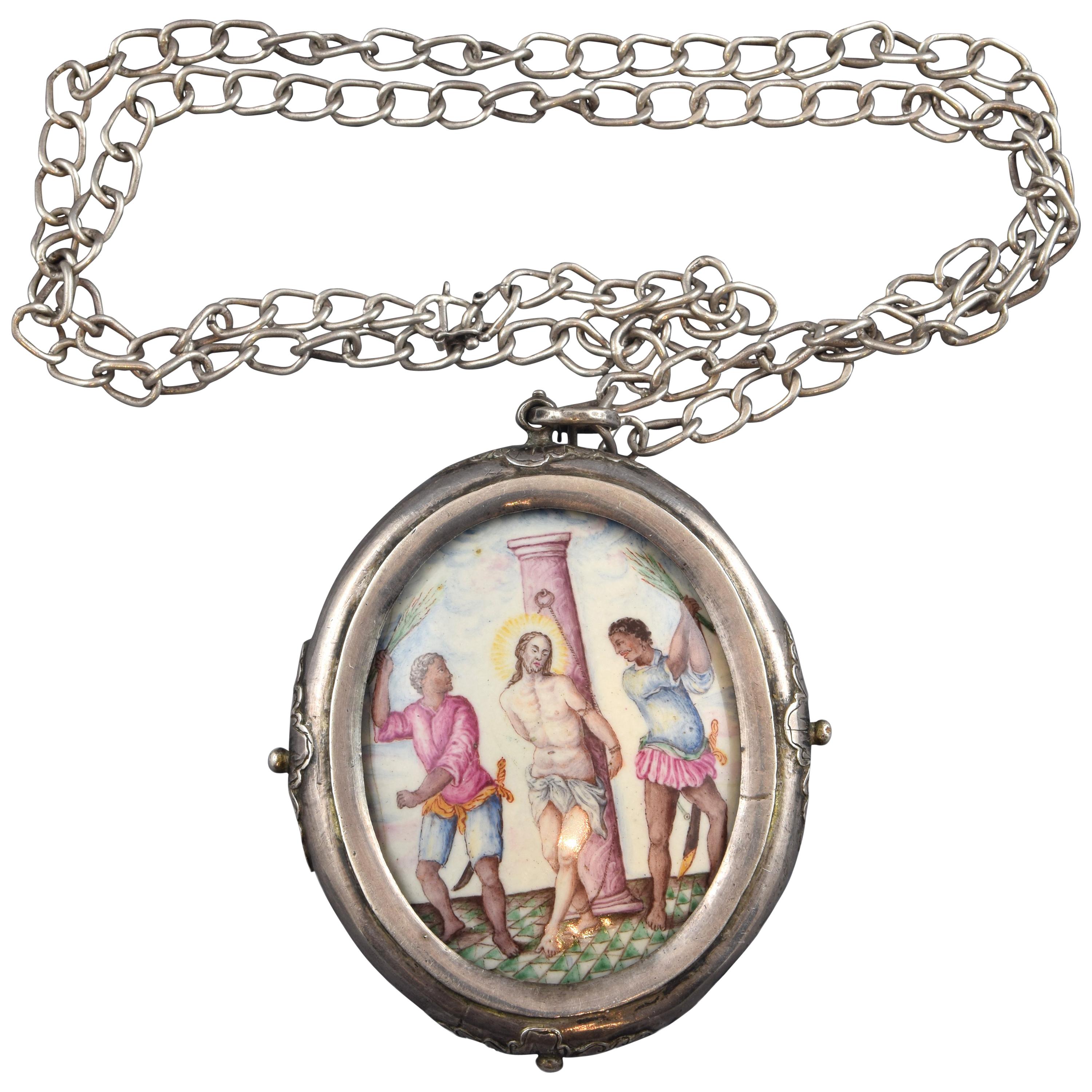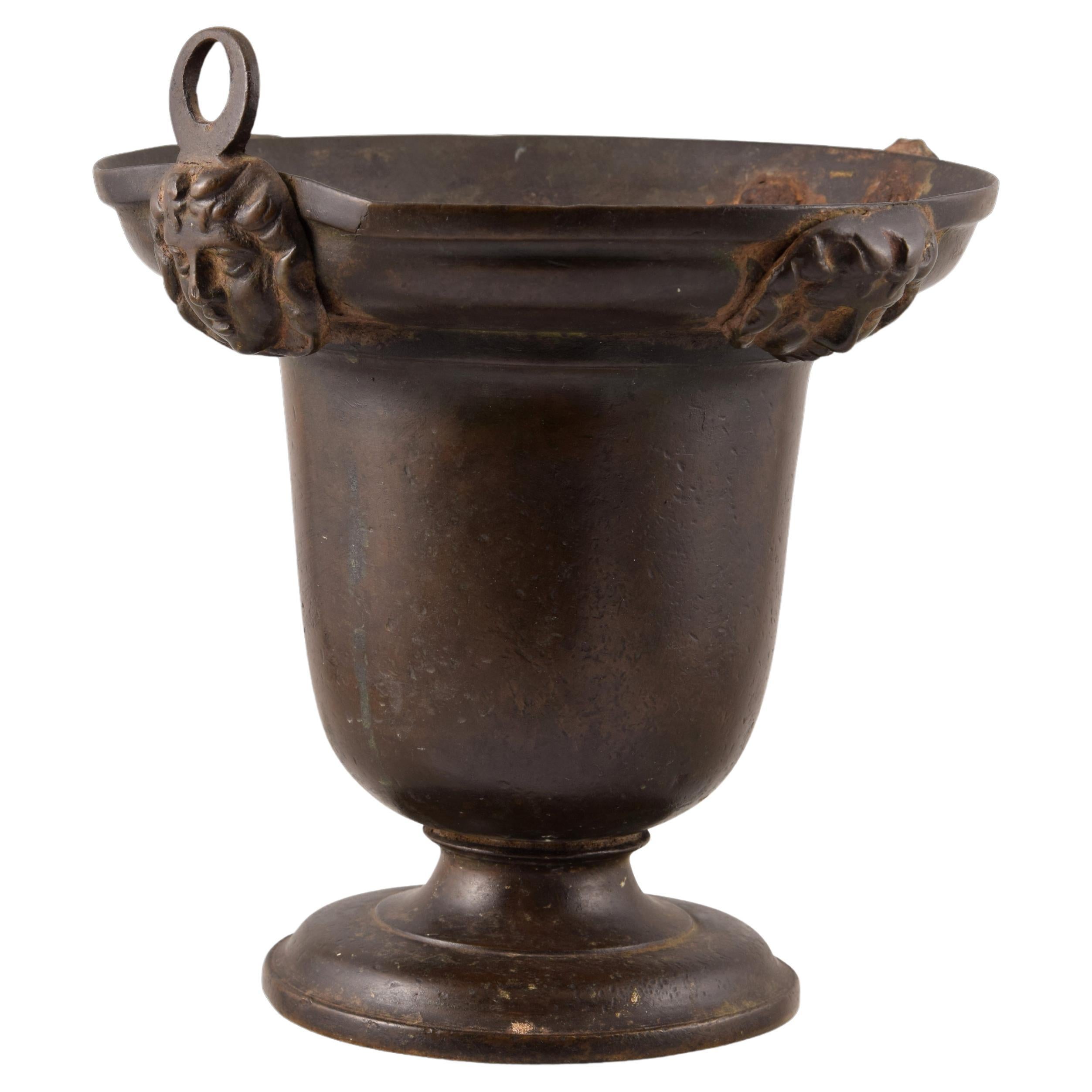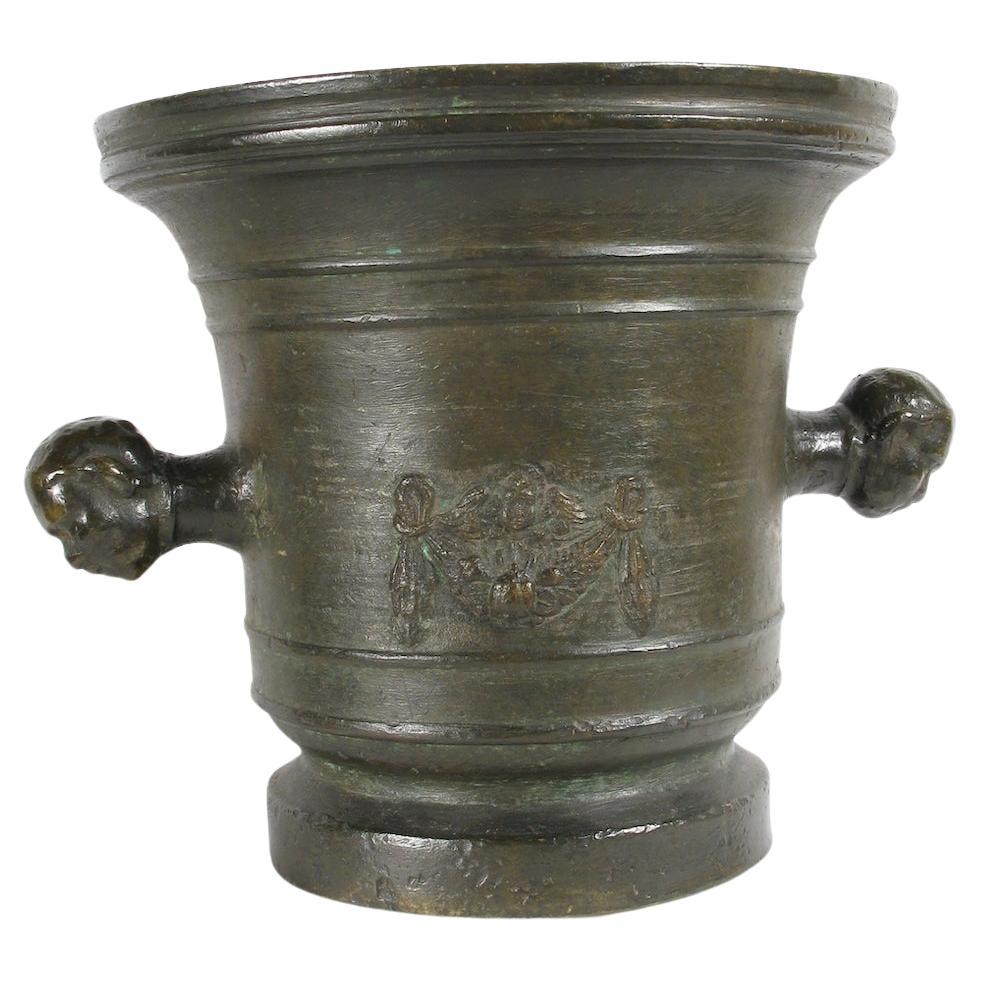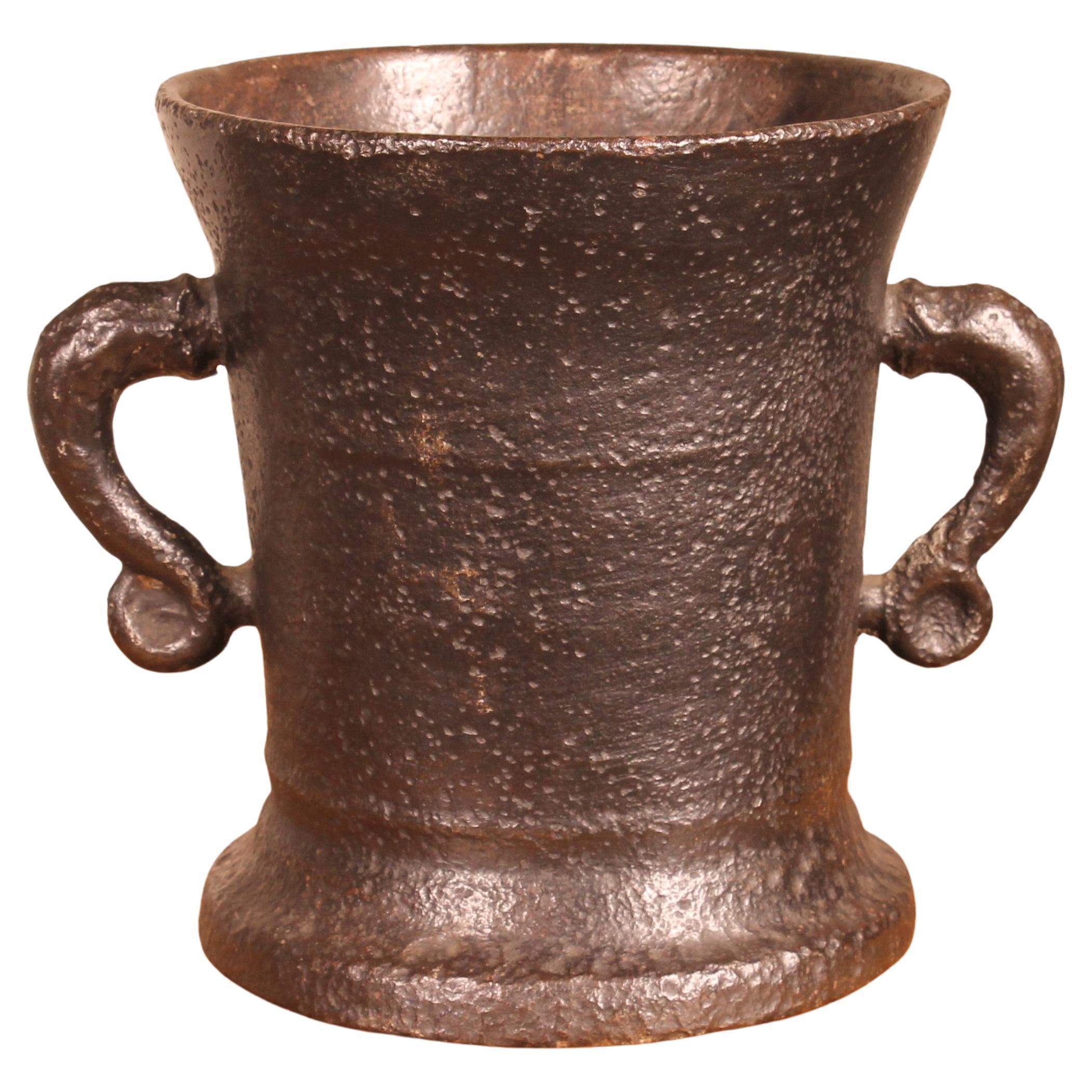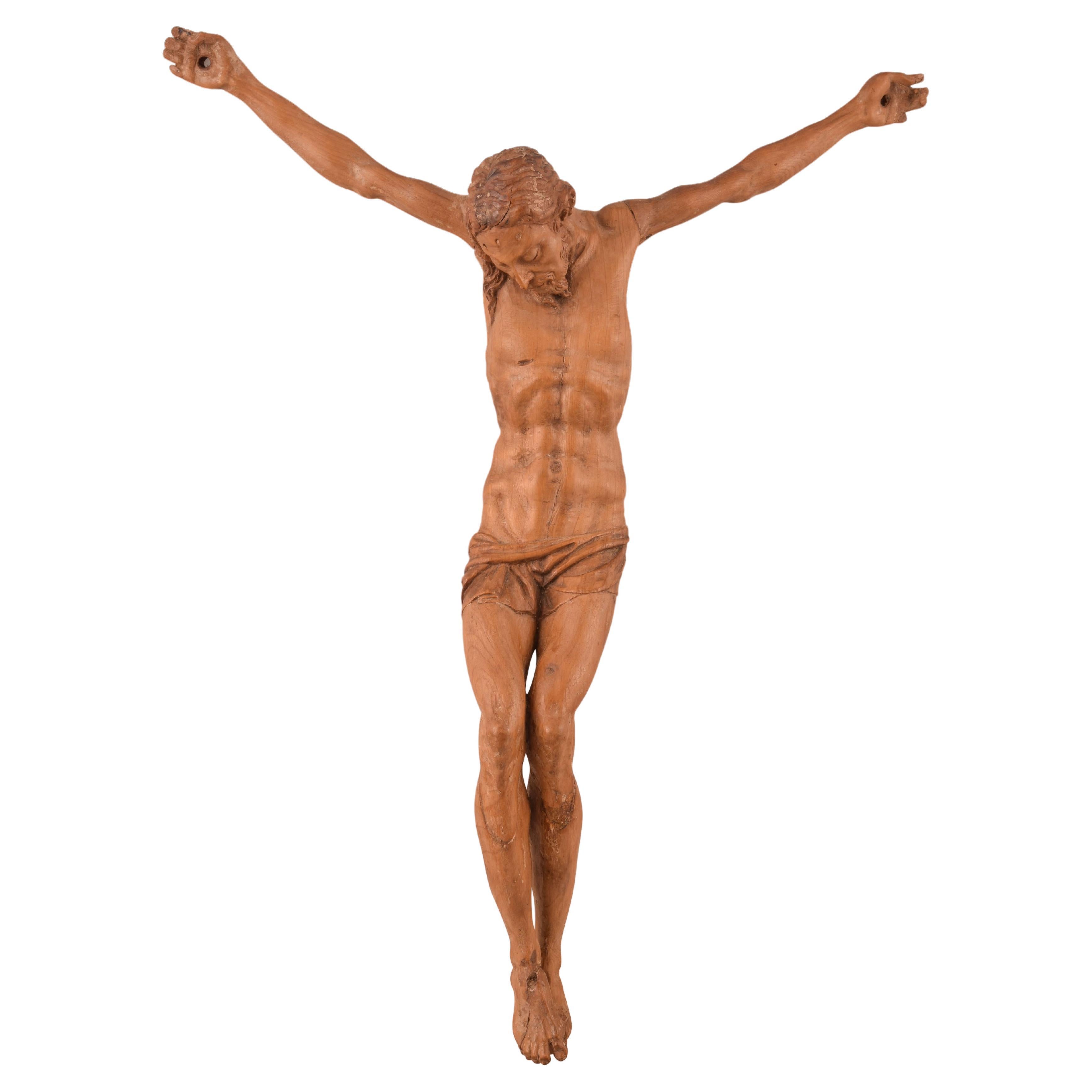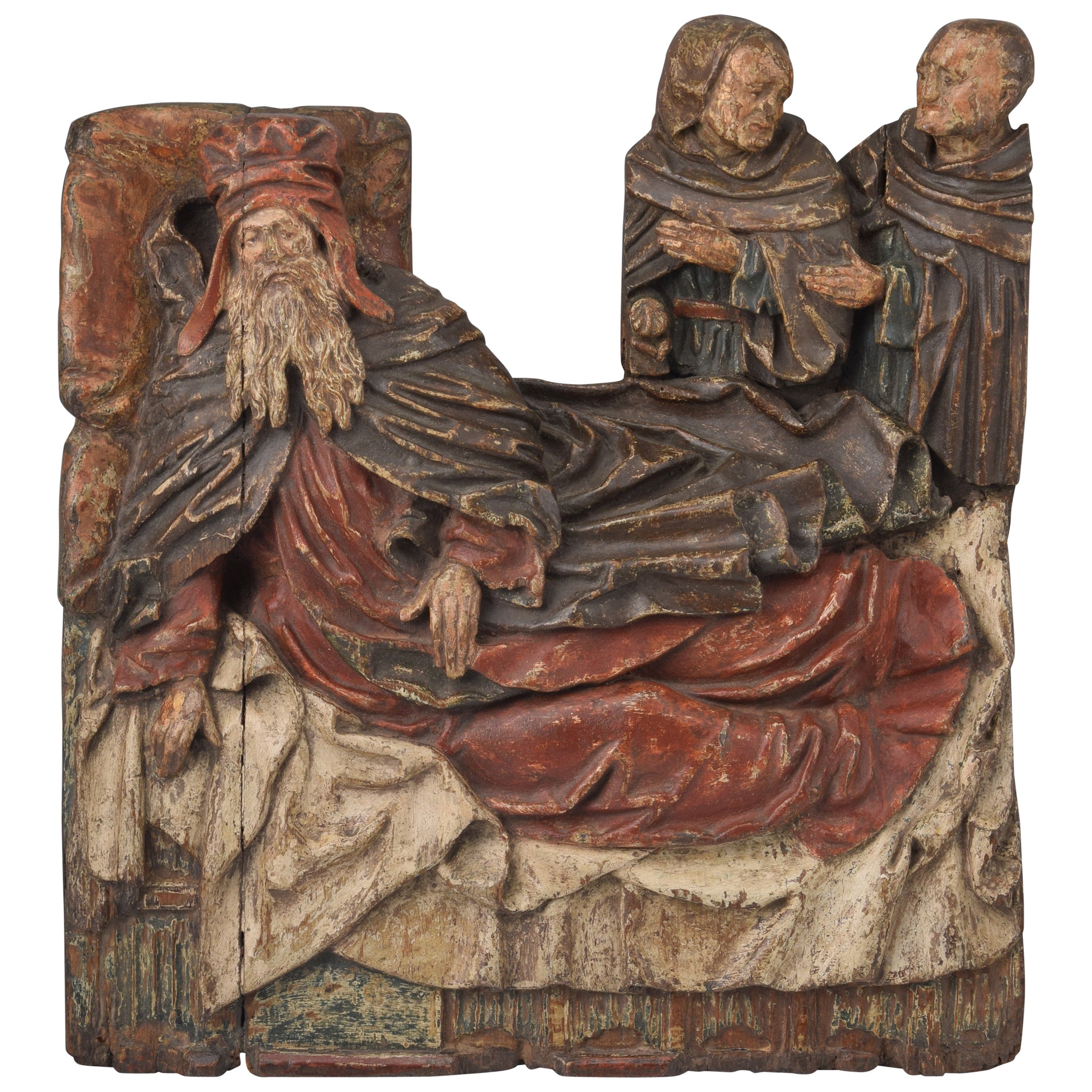Items Similar to Altarpiece Reliquary with Oil on Table, Rosewood, Luis De Morales, 16th Century
Want more images or videos?
Request additional images or videos from the seller
1 of 8
Altarpiece Reliquary with Oil on Table, Rosewood, Luis De Morales, 16th Century
About the Item
LUIS DE MORALES (Spain, 1512-1586).
The Virgin with a book, the Sleeping Child and Saint John.
Oil on panel. Altarpiece with relics may be related to The Royal Site of San Lorenzo de El Escorial.
Published: Mateo Gómez, Isabel. Revista de Estudios Extremeños, 2018, Tomo LXXIV, Nº. II, pp. 1115-1128.
Table with the Virgin of a little more than half body, sitting on a bench and leaning on a table, reading with the sleeping child on her lap; on the right, a Saint
John appears from behind the bench and puts a finger to his mouth asking for silence so as not to disturb Jesus' sleep. The oil is framed by a reliquary altar in
ebony wood: flanked by two fluted columns with Corinthian capital and based, located on a base with the relics (read their signs from left to right, they host those of San Silvestre, San Felipe Apóstol, San Felipe Neri, San Antonio Abad, Santa María Magdalena, Santo Sepulcro de Nuestro Señor and Santa Clara) on canvas and framed by ovals with silver rings; the upper end is decorated, in the frieze and top of the tympanum, with silver ovals with colored agates, and topped by pinnacles with bronze balls.
Isabel Mateo has analyzed both elements: the table was painted by Luis de Morales, nicknamed "the Divine" (Badajoz, h. 1510-1586), and places it in the last stage of the painter, created for private devotion. In his analysis he highlights the similarities with other works of the painter: "Virgin with the Child and the Holy Juanes" of the parish church of Valencia de Alcántara (Cáceres) dated between 1550-1560; the “Virgins with hats” from the Abelló Collection and the Prado Museum in Madrid; etc. Furthermore, he refers to the flamenco iconographic influences and Rafael's models in Morales' work, among others.
As for the reliquary, added later to the completion of the painting, it relates it to El Escorial and Felipe II, finding clear similarities with works carried out by cabinetmakers active in the Monastery dated circa 1590 that do not have stones in their decoration. He adds that the presence of the agates would bring the work closer to 1600 and that it is either Italian or Spanish, with the influence of the Italian.
The work has been studied by Dra. Isabel Mateo Gómez
· Size: 25.5 x 34 cms. (sin MarCo) y 47 x 72 cms, 9.5 approximate depth (con MarCo). This item will require special packaging and paperwork.
- Creator:Luis de Morales (Artist)
- Dimensions:Height: 28.35 in (72 cm)Width: 18.51 in (47 cm)Depth: 3.75 in (9.5 cm)
- Style:Renaissance (Of the Period)
- Materials and Techniques:
- Place of Origin:
- Period:
- Date of Manufacture:16th Century
- Condition:Refinished. Wear consistent with age and use. Minor losses. Minor fading. It has been cleaned.
- Seller Location:Madrid, ES
- Reference Number:
About the Seller
4.9
Vetted Seller
These experienced sellers undergo a comprehensive evaluation by our team of in-house experts.
Established in 1985
1stDibs seller since 2017
292 sales on 1stDibs
Typical response time: 16 hours
- ShippingRetrieving quote...Ships From: Madrid, Spain
- Return PolicyThis item cannot be returned.
More From This SellerView All
- Reliquary Pendant, Flagellation of Christ, Silver, Enamel, 16th CenturyLocated in Madrid, ESOn one side of the pendant, Christ appears tied to a tall column in the center of the composition, being whipped by two sayones or soldiers with branches, following a customary compo...Category
Antique 16th Century European Renaissance Religious Items
MaterialsSilver, Enamel, Other
- Bronze Situla, 16th CenturyLocated in Madrid, ESAcetre. Bronze. Century XVI. Bronze piece that has a circular foot, and a circular body, with an outwardly hollowed mouth at the top, and a decoration in relief in this last area o...Category
Antique 16th Century European Renaissance Religious Items
MaterialsBronze
- Corpus Christi. Wood. 16th century.Located in Madrid, ESChrist crucified. Carved wood. Century XVI. Crucified Christ made of carved wood that does not present a Cross of Thorns but does have a short and tight perizonium, with numerous fo...Category
Antique 16th Century European Renaissance Religious Items
MaterialsOther
- Saint on a bed. Polychromed wood. Flemish school, 16th century.Located in Madrid, ESDream of a saint. Carved and polychrome wood. Flemish school, 16th century. Relief made of carved and polychrome wood that shows an old man with a particular headdress (reminiscent of some chaperones) lying on a bed and accompanied by two friars dressed in habits, who talk to each other. Iconographically, the figure of the old man lying on the bed (note the cushion that raises the upper part of the body, following the common use of the time) who has not died (probably) because he was not completely lying down, is reminiscent of how he was usually represented, for example, to San Antón, San Jerónimo, etc. It is not very likely that it is the subject of the Transit or Death of Saint Francis of Assisi due to the absence of the Stigmata and due to age. It would be part of a cycle of scenes in the altarpiece of a church, an accompaniment that would give the viewer more clues about the identity of those represented. Stylistically, Flemish sculpture...Category
Antique 16th Century European Renaissance Religious Items
MaterialsOther
- Silver Pax O Portapaz, Spain, 16th CenturyLocated in Madrid, ESPortapaz. Silver in its color and gilded. Century XVI. Portapaz made of silver that has a handle (decorated with delicate plant motifs similar to those of the pilasters) and a female and a male bust at the bottom, as well as other architectural elements on the back, and, on the front, an architectural composition classicist basement (with busts flanking a flower and a cross), two pilasters (vegetal decoration and capital recalling the composite order) with entablature (flowers flanking an angel's head; moldings), and a semicircular arch finish with elements veined in relief under cross and flanked by two architectural motifs in the upper part. This composition frames and enhances a gilt silver relief where you can see the Lament or Cry over the Body of Christ, with the Virgin holding the head of Jesus, Saint John at her side, the Magdalene and other characters, a cross following the group and a landscape background with houses and plant elements. This architectural structure mentioned is similar to the one present in other 16th century portapaces, such as that of the Magdalena de Dos Hermanas parish (Hernando de Ballesteros el Mozo, around 1575); or that of the Galaroza parish (same author and date); or that of the portapaz of San Miguel de Jerez de los Caballeros (in some details); etc. As for the relief, it is possible to clearly see a strong Italian influence, and the similarity between it and important pieces such as the Portapaz known as “de Cisneros by Juan de Burgos (1493-1497; MuseoCatedralicio de Alcalá de Henares), as well as in paintings and reliefs. Also noteworthy are both the male and female busts in the lower area and the Maltese cross (or Saint John's) that appears in this area. This symbol was used since the 12th century as an insignia by the Knights Hospitallers of the Order of Saint John of Jerusalem, also known as the Order of Malta...Category
Antique 16th Century Spanish Renaissance Religious Items
MaterialsSilver
- Tabernacle Door, Wood, Metal, 16th CenturyLocated in Madrid, ESThis type of elements are basic in churches, chapels, etc. since they contain the Sacred Forms, reason why it is logical the abundance, with a series of typologies more habitual and traditional or old than others. There are also iconographies more common than others, a certain thematic preference according to the date or school to which the work belongs, etc., always related to the Sacrifice of Christ, Salvation, Transubstantiation, Eucharist, etc. for being a key element for Christianity (especially the Catholic) what they will always contain. The present work shows a chalice with Sacred Form in what would originally be the interior of the door (very usual iconography) and a somewhat more striking relief to the exterior. Inside that it is a Eucharistic Christ or Eucharistic Savior, the way of presenting it is more usual of the scenes of the Last Supper, being not so frequent to find it alone like this. Compare for example with works such as the door of the tabernacle attributed to Alonso Cano...Category
Antique 16th Century Spanish Renaissance Religious Items
MaterialsMetal
You May Also Like
- Bronze mortar, Veneto, 16th centuryLocated in Brescia, ITBronze mortar, Veneto, 16th century Lost-wax cast bronze mortar with body outlined by parallel and succeeding frames delineating its circumference. On the two faces, in a central p...Category
Antique 16th Century Italian Renaissance Scientific Instruments
MaterialsBronze
- 16th Century Cast Iron MortarLocated in Brussels, Brussels16th century cast iron mortar with two very beautiful handles Beautiful original object with a great patina and in very good condition.Category
Antique 16th Century French Renaissance Scientific Instruments
MaterialsIron
- 16th Century Walnut Sculptures from GermanyLocated in Brussels, BrusselsVery elegant sculpture reprenting a Putti (angel) from the German renaissance period -16 century Rare sculpture in walnut of great quality with a very beau...Category
Antique 16th Century German Renaissance Figurative Sculptures
MaterialsWalnut
- 16th century Spanish Bronze Mortar with Letters M on the SidesLocated in Marbella, ES16th century Spanish Bronze Mortar with Letters M on the SidesCategory
Antique 16th Century Spanish Scientific Instruments
MaterialsBronze
- Renaissance Period Hand Carved Oak Panels, 16th CenturyLocated in Beuzevillette, FRSet of two 16th century oak panels, one representing a character accompanied by a dog, the other a character in flames, probably saints. These ...Category
Antique 16th Century French Renaissance Figurative Sculptures
MaterialsOak
- 16th Century Italian Renaissance Carving of a Male SaintLocated in Stamford, CT16th century Italian carved and polychromed figure of a male saint or prophet with a wonderful presence. Shown holding an open book in his right hand with flames at his feet, mid-16t...Category
Antique 16th Century Italian Renaissance Religious Items
MaterialsWood
Recently Viewed
View AllMore Ways To Browse
Add Item
Table Top Items
Top Antique Items
Collection Of Antique Items
Antique Decoration Items
Royal Items
Oil On Canvas Religious
16th Panel
Antique Oil Painting Religious
Antique Religious Oil Painting
Antique Religious Oil Paintings
16th Century Panel
Spain 16th
Spanish 16th
16th Spanish
Rosewood Oval
Italian Late 16th Century
16th Century Spain
